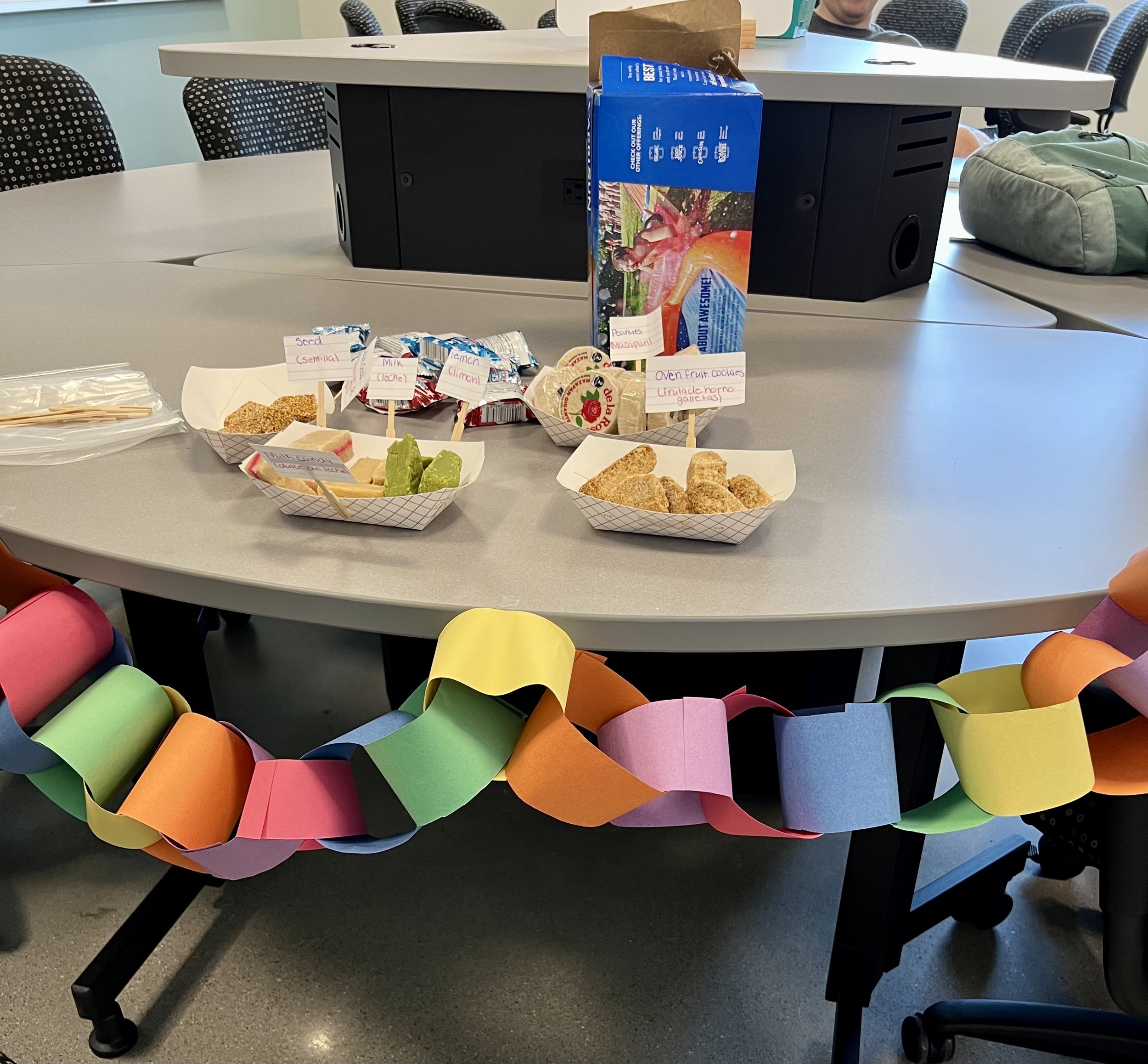The Power of Food in the Classroom
Summer Snacks
I had not taught an in-person summer class in a very long time. My small US History survey course turned out to be a delight this summer.
Because the class met for over two hours and crossed the lunch hour, I asked students to sign up to bring a snack. Not wanting it to be a burden for anyone, I made it clear that a $2 bag of pretzels would be sufficient. I also provided hand sanitizer and we used utensils or gloves.
Halva
Food and Identity
To start, I brought store-bought shortbread cookies, which are important to the British half of me. This was a good way to talk about being multi-national, how I keep English traditions alive while living in Houston, and how that identity colors how I view history.
On another day, I brought scones and tea. I explained that my husband maintains a sourdough starter and I used some of the discard to make the scones with a traditional English recipe. I told students that “cream tea” is a favorite British tradition. They asked me to demonstrate how to eat them properly, so I cut one in half and then applied the clotted cream (actually whipped cream cheese which is the closest I could find!) and lemon curd (a gift from a friend who brought it back from Scotland). They all opted to try the English breakfast tea with milk and sugar. And, of course, I couldn’t help but remind them about the Boston Tea Party and educate them about Yupon tea.
Sweets from Mexico
Food and Connection
The students started by bringing things like granola bars and snack mix. But it quickly turned into a way for them to represent and exchange culture. A Persian student made and brought halva, a roasted date snack. An African student brough Somali sambusas made by his mother. A Latina student shared sweets her cousin brought from Mexico. A student who lived in Seattle previously brought cherries. A Vietnamese student brought a variety of her favorite Asian foods. A student who works full-time at Walmart brought items he purchased from work. For the last day, a student made tamales, which is a real labor of love.
What started as a simple way to keep everyone’s blood sugar up became a real source of connection. They looked forward to bringing and sharing items. We used our break time to talk about food, culture, and what was important in our lives. Community-building is never a waste of time! During the last week of class, many of the students organized a trip to a local museum for extra credit. None of these students knew each other before we began the course, but they made real and lasting connections.




